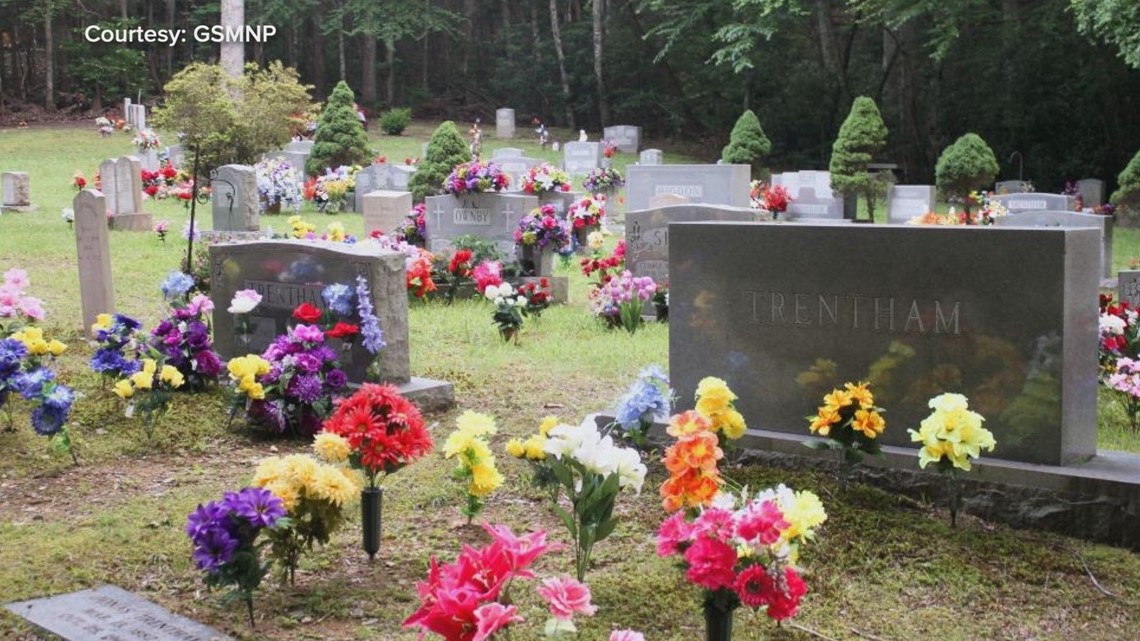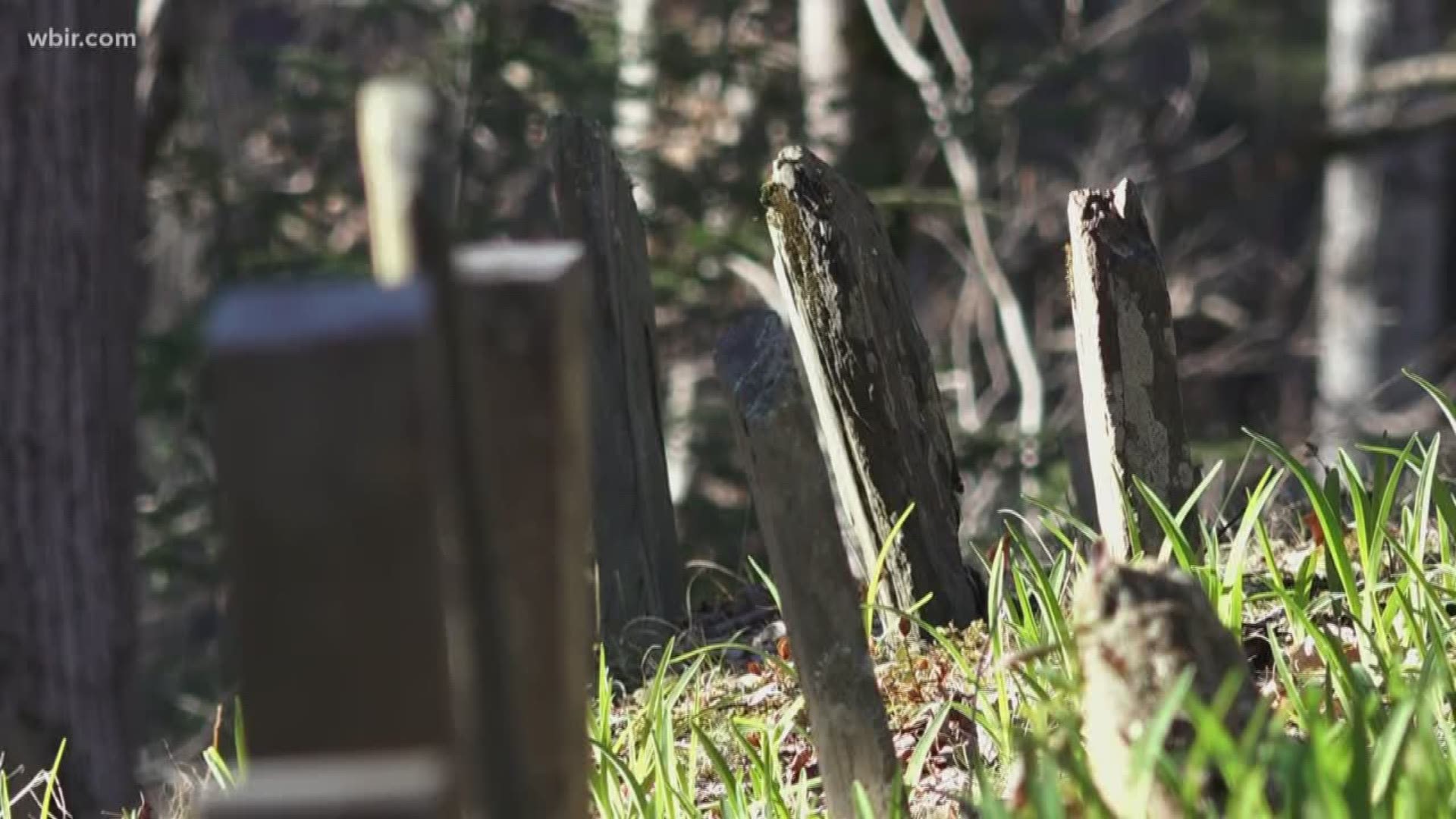The Great Smoky Mountains are known for being full of life – rushing streams, lush forests and incredible creatures.
But there’s another draw of the national park – the memory of lives already lived.
“It speaks a lot to the history of this place,” said Heath Bailey, park archeologist.
Tucked in the mountains are about 160 cemeteries – relics of a time before the land became a national park, when European settlers and native Americans scratched out a living.


“They go back as far as 9,000 years,” Bailey said.
He said through further investigation, the park service is still finding more burial sites. Sometimes they’re community plots, or churchyards – other times, just behind an old homestead. In many cases, they’re not marked on maps and off the park trails.
But others, like the site behind park headquarters in the Sugarlands area, are more accessible.
Bailey said they help visitors understand the rich history of the area.
“These cemeteries … the names on the headstones are shared with the names of people that live in Sevier County, Blount County, Swain County, Haywood County,” he said. “And they’re very much invested in these resources.”


Families are buried inside the park, along with veterans of the War of 1812, the Spanish-American Conflict, both world wars – even confederate soldiers right alongside those that fought for the Union.
The park service helps maintain the connection with the past – in the spring, rangers host decoration days, when families can visit remote grave sites.
“But these are also active burial grounds,” Bailey said. “Descendant family members in some instances will bury their deceased here, often in the old way.”
Some sites have withstood time more than others – as time passes, some handmade markers are wearing away.


“We don’t have headstones or footstones for all of them, simply because they weren’t buried in a way where they would be memorialized,” Bailey said.
But even if the words are more weathered, the stones still tell a story.
“You can see epidemics, if you will,” Bailey said. “Illnesses that struck the area, where you might see a number of burials clustered into a specific few years.”
The park service asks if you come across a site, be sure to respect it – and consider the people that traveled the same mountains generations ago.
These are sacred places,” Bailey said. “These are hallowed grounds, the cultural heart of the park. They memorialize the people that came before us. They summarize the cultural history of this place.”
"It's very humbling to think we're standing in a place where there's been so much human activity for so long,” he added.
If you’re interested in visiting a site, the park service recommends asking a ranger at a visitor center for guidance. Rangers discourage off trail hiking.
Mike Maples, an experienced hiker and historian of the Smokies, has also written a book documenting cemeteries in the park.

